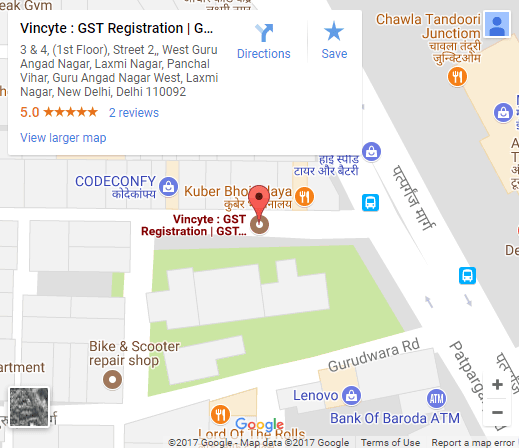Any income derived from the transfer of a capital asset “movable or immovable” is taxable under the Capital Gains section of the Income Tax Act of 1961. Capital Gain is divided into two categories: short-term capital gain and long-term capital gain.
Meaning of Capital Asset:
- Any type of property owned by an assessee, whether or not related to the assessee’s business or profession.
- Any securities held by a Foreign Institutional Investor (FII) that has invested in such securities in compliance with the SEBI Act of 1992.
- Any ULIP to which the exemption under Section 10(10D) does not apply due to the application of the fourth and fifth provisos.
Term “Capital Asset” shall include the following:
1. Any stock in trade (other than securities, consumable goods, or raw materials kept for the sake of his business or profession.
2.Personal effects, that is, movable property (including clothing and furniture) held for personal use by an assesse or any member of his family dependent on him; however-
- Jewelry, Archaeological Collections, Drawings, Paintings, Sculptures, and Any work of art shall be considered capital assets even if used for personal purposes;.
3.Gold Bonds with Specifications and Special Bearer Bonds
4.Gold Monetisation Scheme Deposit Certificates, 2015
5.Agricultural Land in India, without being a land placed.
- Within the jurisdiction of a municipality, notified area committee, town area committee, cantonment board, and a population of at least 10,000 people
- Within the following aerial distances from the local limits of any municipality or cantonment board:
i. Not more than 2 kilometers if the population of the area exceeds 10,000 but does not exceed 1 lakh;
ii. Not more than 6 kilometers if the population of the area exceeds 1 lakh but does not exceed 10 lakhs.
iii. Not more than 8 kilometers if the population exceeds 10 lakhs.
Classification of Capital Asssets:
Long-Term Capital Assets: Capital assets held for more than 36 months previous to the transfer date are considered short-term capital assets.
Exceptions:
1. In the case of the following assets: Holding period of more than 12 months.
- Equity or preference shares of a firm listed on any recognized stock market in India;
- Other listed securities such as debentures and government securities;
- UTI units;
- Equity-oriented fund units; or
- Zero coupon bonds.
2. Period of Holding for more than 24 months immediately previous to the date of transfer in the case of unlisted shares and immovable property (such as land or building or both).
Short-Term Capital Assets: Capital assets held for less than 36 months previous to the transfer date are considered short-term capital assets.
Exceptions:
In the case of the following assets: The holding period cannot exceed 12 months.
- Equity or preference shares in a firm listed on any stock exchange in India, including the Bombay Stock Exchange and the National Stock Exchange (BSE and NSE);
- Other publicly traded securities, such as debentures and government securities;
- UTI units;
- Equity-oriented mutual fund units;
- Bonds with no coupon.
In the event of unlisted shares and immovable property (land, building, or both), the holding period must be no more than 24 months prior to the date of transfer.
Type of Capital Gain:
- Long Term Capital Gain: Capital Gain emerging from transfering of long-term capital asset is termed as long-term capital gain
- Short Term Capital Gain: Capital Gain arising on transfer of short-term capital asset is termed as short-term capital gain.
- Exceptions: Capital Gain on depreciable assets is always considered as short-term capital gain.
Computation of Capital Gain:
| Long Term Capital Gain | Short Term Capital Gain |
| Full value of consideration
Less: Expenditure incurred in relation to transfer (like brokerage, commission, advertisement expenses etc) Net Value of Consideration Less: Indexed COA* Less: Indexed COI* |
Full value of consideration
Less: Expenditure incurred in relation to transfer Net Value of Consideration Less: COA* Less: COI* |
- COA: Cost of Acquisition
- COI: Cost of Improvement
In the case of Depreciable Assets: A short-term capital gain or loss from the sale of a depreciable asset will appear only in the following two situations:
- a) when the WDV of the asset block is nil on the final day of the previous year; or
- b) when the block ceases to exist on the last day of the previous year.
Calculation of Indexed Cost of Acquisition:
| Cost of Acquisition × Cost Inflation index (CII) for the year of transfer | |
| CII for the year of acquisition or for the Financial Year 2001-02, whichever is later |
Calculation of Indexed Cost of Improvement:
| Cost of Improvement × CII for the year of transfer) | |
| CII for the year of Improvement |
Note: If any capital asset (acquired before April 1, 2001) is transferred then the assessee has an option to take its cost of acquisition either as fair market value as on April 1,2001 or its actual cost.
Taxability on Long Term Capital Gain:
| POH- More Than 12 Months | POH- More Than 24 Months | POH- More Than 36 Months |
Category-I
Taxability: u/s 112A- 10% on exceeds from 1 lakh (without Indexation) Category-II
c) Units of equity oriented funds; or d) Zero Coupon Bonds. Taxability u/s 112- 20% on exceeds from 1 lakh (without Indexation) |
Taxability: u/s 112- 20% (with Indexation) |
Taxability: u/s 112- 20% (with Indexation) |
Note: Basic Exemptions are available while calculating tax liability
Taxability on Short Term Capital Gain:
| POH- Up to 12 Months | POH- Up to 24 Months | POH- Up to 36 Months |
| a) Listed Equity or preference shares
b) Other listed securities like debentures and Government securities c) Units of UTI d) Units of equity oriented funds; or e) Zero Coupon Bonds. Taxability u/s 111A- 15% if *STT paid Normal Slab Rate – If STT not paid |
Taxability: Normal Slab rate |
Taxability: Normal Slab Rate |
Note: Basic Exemptions are available while calculating tax liability
*STT- Security Transaction tax which is levied on buying/ selling of financial instruments like equity, debentures, bonds, derivatives, mutual funds.
**STT is not payable on Debt and Debt oriented schemes
Loss Set off and Carry forward:
- Short-term capital loss can be offset by short-term capital gain and long-term capital gain.
- Short-term capital losses can be carried forward and set off for an additional eight years.
- Long-term capital losses can only be offset by long-term capital gains.
- You can carry forward your loss for a maximum of 8 years.
Get In Touch

Contact Us
New Business


